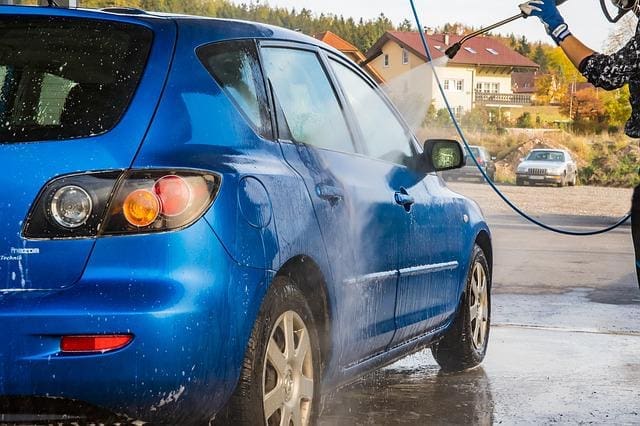Water. Shampoo. A good quality sponge or wash mitt to slap the soapy water on and rinse it off again. That’s washing a car in a nutshell, isn’t it?
To the casual car washer, yes, it is. But anyone who takes the upkeep of their vehicle a little more seriously like Nashville Car Detailing Experts should be shaking their head right now. Because the above misses out on one crucial part of the car washing process. Drying.
No doubt a few puzzled faces are reading this. Drying? Why would you need to dry your car after washing it? You just leave it to dry naturally, surely?
That’s the common view. But in fact, taking drying seriously is not just for the ‘dry hards.’ There are some very good reasons why everyone should be as meticulous about drying their car as they wash all the dirt off with soap and water.
So without further ado, allow us to explain why before looking at how to dry your car properly and the equipment you will need.
Why drying your car matters
The first thing everyone says when they are told they should be drying their car after they wash it is: “But my car gets rained on all the time. I don’t rub it down with a towel then, do I?”
And that much is true. But rain water doesn’t contain shampoo.
The main argument for drying your car after washing it is that you don’t just use plain water. If you did, you probably wouldn’t get it very clean. You need car shampoo to get your car squeaky clean because it helps to remove grease and other substances that otherwise would cling to your paintwork no matter how hard you rubbed (and you don’t want to rub that hard because you will end up marking the paint).
But as much as car shampoo is your friend, it is itself a cocktail of chemicals that you don’t really want to leave on the surface of your car. Even if you rinse your car thoroughly after shampooing (which you should), the water left on your car will still contain traces of soap.
If you leave your car to air dry, the water will evaporate, but the soapy substances will not. They will be left as a thin whitish residue or film on your car. Not only does it not look very clean, but if you leave this residue for a long time, especially in direct sunlight, the chemicals could start to react with and damage your paint. A car detailing service will know exactly how to do the whole application process, so it might be best to have them take care of it for you!
Drying is not a one-time thing
Here’s the real rub (pun intended) for anyone who is not used to drying their car after a wash. It’s not really enough just to do it once at the end of the process. Or at least not if you take washing seriously enough to use snow foam, pre-washes, contaminant removers, etc.
Say you use snow foam at the start of a wash process, which helps to loosen dirt and debris to make it easier to wash off. Once you are done with that, you know you are supposed to thoroughly rinse off all the foam. You should also dry your car thoroughly before continuing to the next stage.
Why? The same reason you dry after shampooing is to remove as much foam as possible. The rule is that whatever type of substance you use on your car, you don’t want to leave any trace of it behind. If, after washing, you go on to clay bar out embedded dirt and then give it a polish, you should wash, rinse and dry after using the clay, and then wash, rinse and dry after giving it a polish to remove all traces of the cutting compound.
The only exception is right at the end of a detailing process when you apply wax or sealant, which you want to leave on your car’s bodywork to protect.
Using the right drying tools

As much as drying is an important part of the washing process, whatever you do, don’t just take any old rag or towel to your car. The likelihood is that its fibers will be too tough for the delicate paintwork of your car, and you’ll end up covering it in tiny scratches.
You may have heard of chamois leather. Made from the skin of a type of mountain goat, back in the day, chamois leather was the go-to tool for drying a car. Not only is it soft, but it is also naturally porous, which means it soaks up water very efficiently and therefore helps you dry your car quickly.
But chamois leather requires a certain amount of looking after. Otherwise, it tends to rot. These days, the wonders of technology have given us a far better alternative – microfibre. Microfibre cloths and wash mitts are arguably the most useful car detailing supplies. They certainly have the most uses – soaping, rinsing, drying, applying polishes, dressings, waxes, etc.
Super soft and super absorbent, they are equally good for applying substances to your car and wiping them off. Just make sure you have enough to do everything you need – you don’t want to use the same mitts to apply a range of different products. And when it comes to drying, you need to have a good stack of clean, dry cloths to dry at every stage required.
Featured Image by Hannes Edinger from Pixabay




